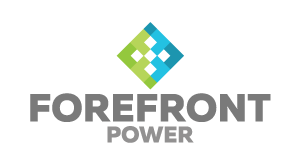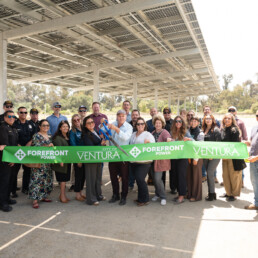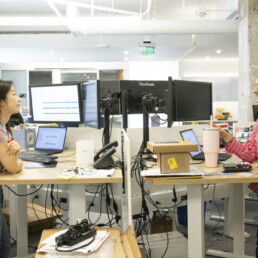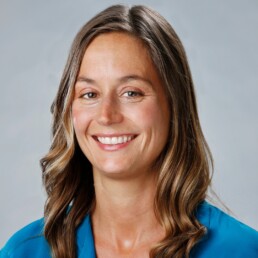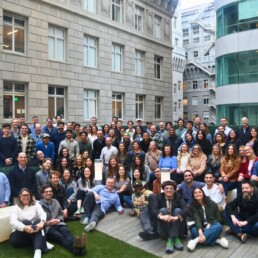We spoke to ForeFront Power Senior Asset Manager Aly Crofford to learn more about her and hear her thoughts on the renewable energy field, customer relationships, and solar in education.
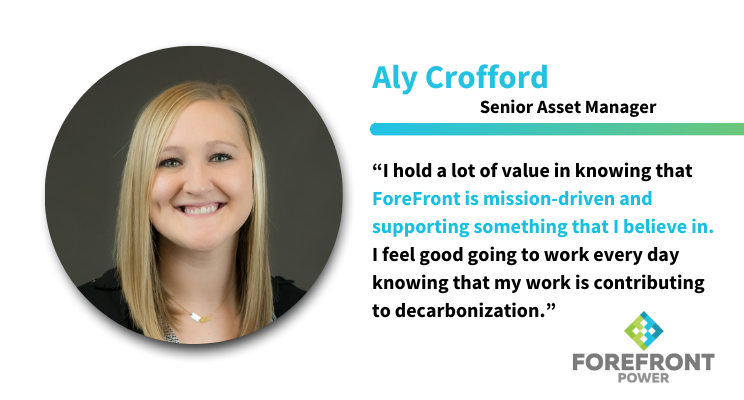
Where are you from originally?
AC: I am from a town called Pleasant Hill in the East Bay Area. I live in Chicago now, but was born and raised in the San Francisco Bay Area. I went to college at Cal Poly in San Luis Obispo, California, moved back to Oakland for the first part of my career, and later moved to Chicago in January of 2019. It’s certainly different from the Bay Area, especially the weather, but I love it here!
What do you like to do in your free time?
AC: I like reading, cooking, biking, traveling when I’m able to, shopping for records, and gardening. I really enjoy anything involving plants. There’s a great food scene here in Chicago, so I’ve also been trying out a lot of new restaurants lately.
Who was one of your childhood heroes? Who inspired you?
AC: I have two heroes; one real and one fictional. The first is my older brother. Growing up, there were a lot of struggles. I was diagnosed with type 1 insulin-dependent diabetes when I was 3, but my brother made sure to remind me to never let anything hold me back. He kept me from ever feeling discouraged. We didn’t really come from much, so when he went to college, it made me believe I could too. I’ve always really looked up to him.
The second would be Hermione Granger from the Harry Potter series. She was one of the first strong female literary characters I was introduced to. As a kid who really liked school, she made being a nerd cool. She may have started off being made fun of for being book smart, but everyone eventually learned her intelligence made her a force to be reckoned with. Best of all, she never changed who she was. That really inspired me.
What did you want to be when you grew up?
AC: When I was much younger I wanted to be a vet because I love animals. Then I got a job at a flower shop when I was 16 and fell in love with gardening and floral design. That love for plants made me decide to study botany and environmental horticulture in college. But during my first job working in landscape design, I realized it wasn’t the right fit for me long-term. I had been following renewable energy on the side and also had a friend who worked at a residential solar company. I felt unhappy with my job at the time, so I reached out to him to learn more about working in solar. I thought it sounded great! Once I saw his company had openings, I applied, got the job, and officially made my transition into renewable energy. It took figuring out what I didn’t want to do with my career to figure out what I did want to do.
How did you find ForeFront Power?
AC: I knew I wanted to leave the residential solar sector and get into the commercial space. I found ForeFront Power through a recruiter right when it was founded in 2017 and joined the development team as a project coordinator. When I learned we were starting up our in-house asset management services in 2018, I decided to throw my hat in the ring and was brought on into my current role as an asset manager.
What does your day-to-day look like as an asset manager?
AC: I’ve got quite a range of responsibilities. Mainly I oversee the financial and contractual obligations of our 100 operating PV projects. I also supervise the performance and management of our storage projects. There are various levels of reporting and complexity depending on the contracts associated with each asset. My job is to ensure that we’re tracking everything accordingly, reporting accurately, and communicating all that information to our customers and any stakeholders involved.
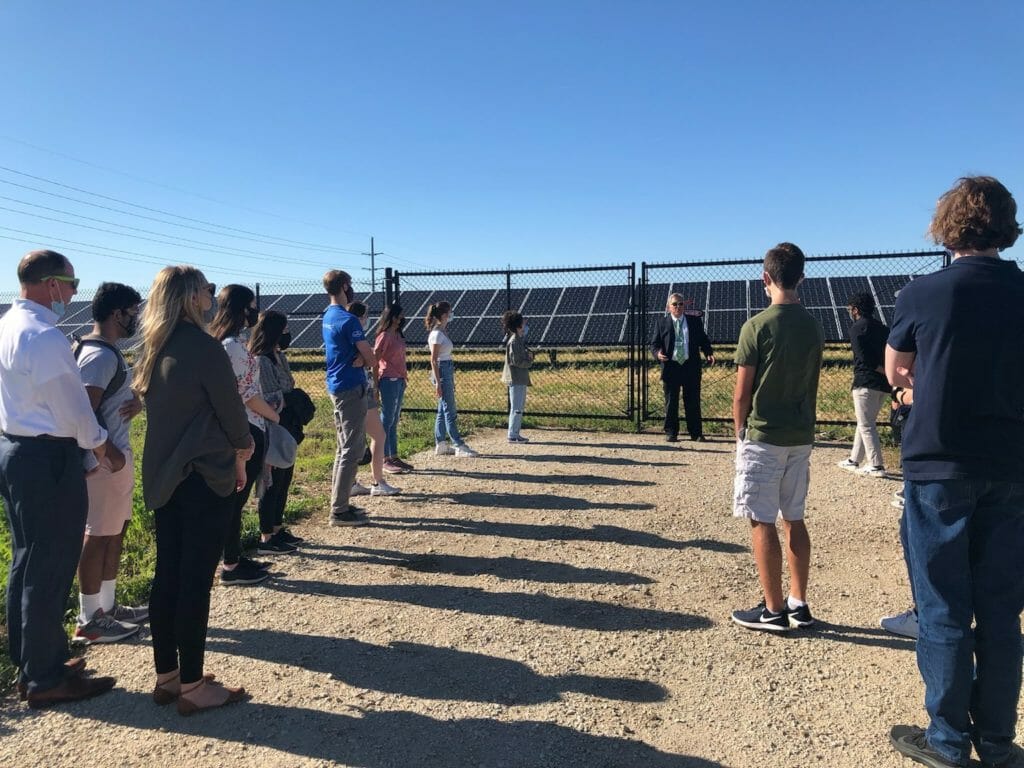
ForeFront Power giving STEM students a tour of the solar system at Huntley CSD 158 in Illinois
Do you have any favorite projects you’ve worked on?
AC: When I first started doing asset management full time, we had just begun rolling out our community solar portfolio. Since I was new to asset management and didn’t know much about the community solar market, it felt like I was drinking from a fire hose with how much I had to learn. Community solar assets involve a lot more contracts than the typical behind-the-meter asset. I built new processes and managed our 3rd party relations effectively. During operation, I learned how to manage and maintain these obligations accurately and efficiently. When I got to support the sale of those community solar assets, it felt like a capstone project for me — I had seen the whole project lifecycle from beginning to end. It was an all-around incredible learning experience!
What is your favorite part about being an asset manager?
AC: I like looking at the data on how our projects perform and relaying that news to the customer. From origination to operation, these extensive long-term development deals have a lot of moving pieces, so the process can be very overwhelming for customers. When Forefront delivers a completed project, it’s incredibly exciting to kick off operations. We start delivering performance reports and savings analysis to customers on their clean energy consumption and how much money they’re saving. It’s a rewarding experience — demonstrating their return on investment and how all the time and effort put into the project was worth it, especially now that they are producing clean energy on-site.
How do you engage and build relationships with your customers?
AC: We start every customer relationship with a kickoff call, followed by recurring meetings throughout the duration of the project. I’m always as transparent as possible with our customers. I maintain an open-door policy where customers feel comfortable enough to pick up the phone and call me if they have any questions or concerns. To foster a good relationship, communication and responsiveness go a long way.
When working with ForeFront’s customers in education, do you see renewable energy development as a student learning opportunity?
AC: Definitely! The asset management team recently visited our customer Huntley Community School District 158 in Illinois to talk to a group of honors STEM students about how solar works and give them a tour of their school’s array. When speaking with kids about solar energy, I find that explaining the tangible value of decarbonization with real-world examples is quite effective. Instead of saying, “here’s this three megawatt solar farm with this many inverters and this many panels”, I describe how the solar system at their school can provide energy for 500 different homes, or is equal to planting X amount of trees, or how solar is an infinite source of energy, unlike fossil fuels which are unsustainable. These types of comparisons are easier to grasp and help pique their interest. Getting people of all ages interested in renewable energy is more important than ever because when they understand the real benefits, they’re more likely to choose clean energy in the future.
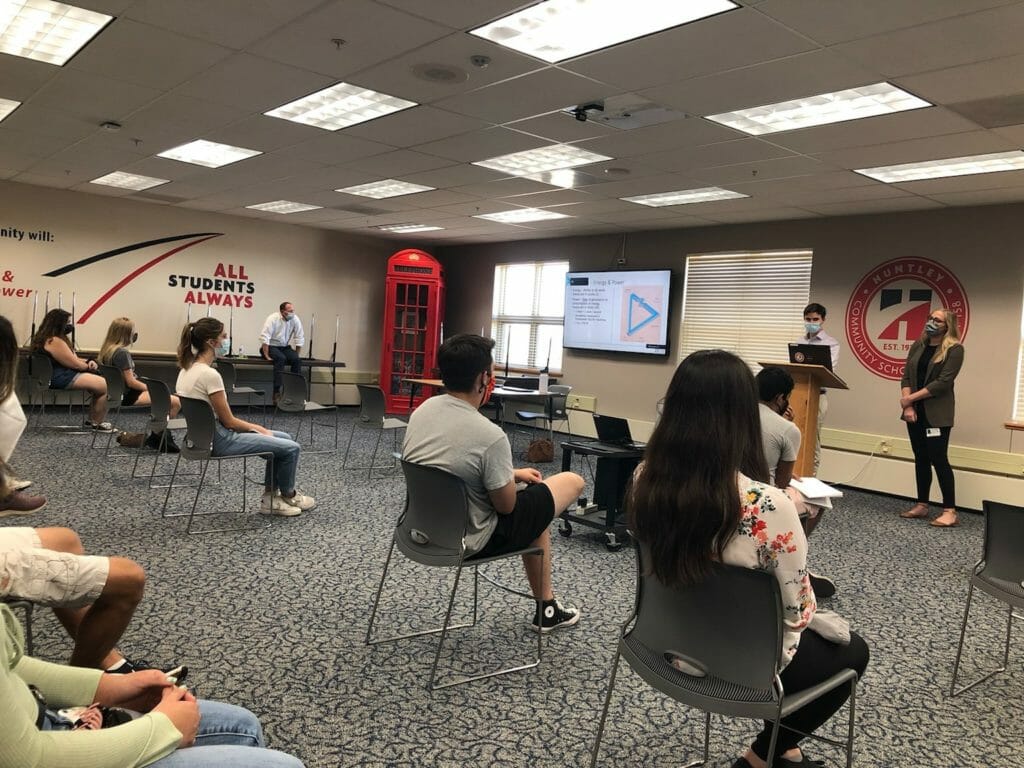
ForeFront Power speaking to STEM students at Huntley CSD 158 in Illinois
How have you seen ForeFront Power evolve alongside the solar landscape over the past few years?
AC: When I started at ForeFront in 2017, it was a new company that had zero assets online. It’s been incredible to see our portfolio growth in just four years. We may not have been around that long, but we’ve been able to keep up and be a significant player in new developing markets like community solar, storage, and REC markets in Illinois. It speaks a lot to the team that we have and continue to build. Just as the solar industry is growing, ForeFront Power is growing right alongside it.
How can we encourage and motivate more organizations to adopt renewable energy?
AC: Of course, environmental stewardship is important for organizations, but making solar work financially is ultimately going to perk their ears up a bit more. We motivate decision makers by educating on the costs of fluctuating energy rates compared to the flat energy rate we typically offer. Then, especially with all the environmental challenges we’re facing as a result of climate change, it’s becoming increasingly important to have reliable, clean energy — and even better if it’s saving you money.
What do you envision for the future of the energy industry?
AC: I see new technology continuing to reduce costs and increase efficiency. Programs like community solar will make solar energy affordable and accessible for everybody. Different utility and state incentive programs will continue to fund more solar development. For now, that seems to be the direction the industry is moving in.
What advice would you give to young people considering a job in renewable energy?
AC: I hold a lot of value in knowing that my company is mission-driven and supporting something that I believe in. I feel good going to work every day knowing that my work is contributing to decarbonization. If you’re considering a job in renewable energy, I say go for it! It’s an ever-evolving field that feels great to be a part of.
Interested in learning more?
We would love to discuss how our solutions might be a fit for your organization. Contact one of our solar, storage, or e-mobility experts today:
